ANTIQUE BOTTLE COLLECTING IN NEFYN IN THE 1980'S
July 2020
In the late 1970's several books were published in the UK on bottle collecting. I bought such a book for my father Lawrence Owen who was nearing retirement and I am glad I did. The book set him off on a flurry of activities looking for old bottles around the Nefyn area. Like fishing, it became another hobby of sorts for him and one which he thoroughly enjoyed after he was retired.
The book indicated the best places to search for collectible bottles was old rubbish dumps. My father had lived in Nefyn since 1919 and he was familiar with many of the old dumps around the area. The earliest dumps were located along the cliffs on the edge of the Pen Isa'r Dref fields and along the Nefyn cliff path. Those cliff areas had flat wet regions half-way down the slope into which the rubbish would be quickly absorbed. The cliffs were convenient for dumping since they were close by. A horse and cart would collect rubbish from around town and go through the fields to dump along the edge of the cliffs. When large houses were built for the more affluent people in the fields along the Morfa Road in the West End of Nefyn, the owners would tell their gardeners to cart the rubbish to the cliff path and throw it over the side. The flat area halfway down Screw Road on the left, behind where the public toilets are now, had an abundance of mint growing there, cast off as garden weeds in the rubbish from Cliff Castle and the adjacent houses near the cliff path above.
In the early twentieth century, when more and more English visitors started populating the town in the summer months, dumping rubbish over the cliffs obviously became less attractive. A decision was made to move the dumping to areas further out of town and one of the places selected was on the side of Mynydd Nefyn, high on the mountain above Nefyn between Garn Boduan and Echo Mountain. A horse and cart hauled the town rubbish up Penbryn Glas and all the way to the very top of the hill, then a left turn past Gorffwysfa, Fron Deg and the other houses and along the straight path towards Echo Mountain. Some distance along the straight section there was a right turn on to a path through the fields and then up on to the side of Mynydd Nefyn for dumping. Maybe they could use Mynydd Nefyn because it was viewed as common land (tir cwmin). I believe the dump area is now covered by evergreen trees planted there in the late 1980's.
Another area where dumping was allowed was in Gors Geirch on the left side of the Nefyn to Dinas road, down in the dip just below the Bryn Cynan Inn. This area was even less obvious than on the cliffs and on the mountain side. I remember the activity at that dump site with initially horse and carts and later lorries participating. I also remember going to Gors Geirch with Wil John Hughes to try and find curlews (gylfinhir) and lapwing (cornchwiglan) nests and getting a lesson on how hazardous such a dump could be. I had short pants on and I had my legs burnt after sinking above my knees into the soft but hot part of the dump close to the road where material was decomposing. Thankfully I was able to pull myself out of there in time. Things have changed since those early days in the 1950's. Gors Geirch is now recognized as a nature reserve, an extensive environmental wetland area supporting a wealth of wildlife of great natural importance to the Lleyn peninsula. Dumping rubbish there today is strictly prohibited.
In the summer, people living in the cottages on Nefyn Beach also had a problem with how to dispose of their rubbish. Carrying it along the beach and up Screw Road to get rid of it in Nefyn was not a simple task. If they had a motorboat in the bay, the easiest solution was to dump it in the sea. I remember seeing many a Nefyn motorboat way out at sea beyond the Point with a stream of rubbish floating and slowly sinking behind it. The giveaway was the flock of seagulls that accompanied the boat. I am sure that is another practice not allowed anymore.
The amount of rubbish from ordinary people in Nefyn was very little and was small enough to be spread out in the back garden. The people had no extra money to lavish on expensive disposable items. Their rubbish consisted mainly of empty bottles, discarded or broken china, paper and cardboard which disintegrated quickly, tin containers which soon rusted away and what we in Welsh called “lludw”, the morning remnants from a grate coal fire the previous day. There was no plastic material like today and even “lludw” is not common anymore since more houses are electrically or gas heated. Clearly no items of great value would be found in those local dumps. Still my father's bottle collecting book showed with colored photographs how appealing and desirable a china cabinet full of those Victorian bottles and antique ceramic pots would be in your home. Granted they were not worth much but it was a good advertisement and it boosted the attraction for collecting such items. More desirable perhaps were items that might be found in the dumping areas for the large affluent manorial estates such as in Bodfean, Glynllifon or Cefnamlwch.
My father's preferred dump site was the one on the side of Mynydd Nefyn. He spent many a sunny afternoon up there in the spring with a small shovel and a canvas bag, digging and sifting the dirt for 'treasures' as he called them. Then back home to thoroughly wash the items out with a hose pipe in the back garden. Jim Bentley from the Sportsman Inn in Nefyn also participated in the same pastime. My father's favorite finds were the Codd bottles which he remembered smashing when he was a child to access the glass ball in the bottle's neck to use as a marble. Also the ceramic lids of pots for toothpaste, processed meats etc some of which were very colorful, the shear top multi shaped glass ink bottles and the dark blue poison bottles which sometimes came with crooked necks. The most precious of all to a fisherman were the colored glass balls used as floats in old herring nets. He found quite a few of them as well.
Lawrence asked some of his old friends if they knew where the dump site was located for the Plas in Bodfean but no one seemed to know its precise location. Over time he collected a large amount of items and, as per the book, my mother had the best pieces displayed in a cabinet in the parlour. He brought a few items over here to me in America, since he thought I would be interested. His suitcases were heavy and he would have been charged a hefty amount nowadays. The photos of some of the items he found are shown below.
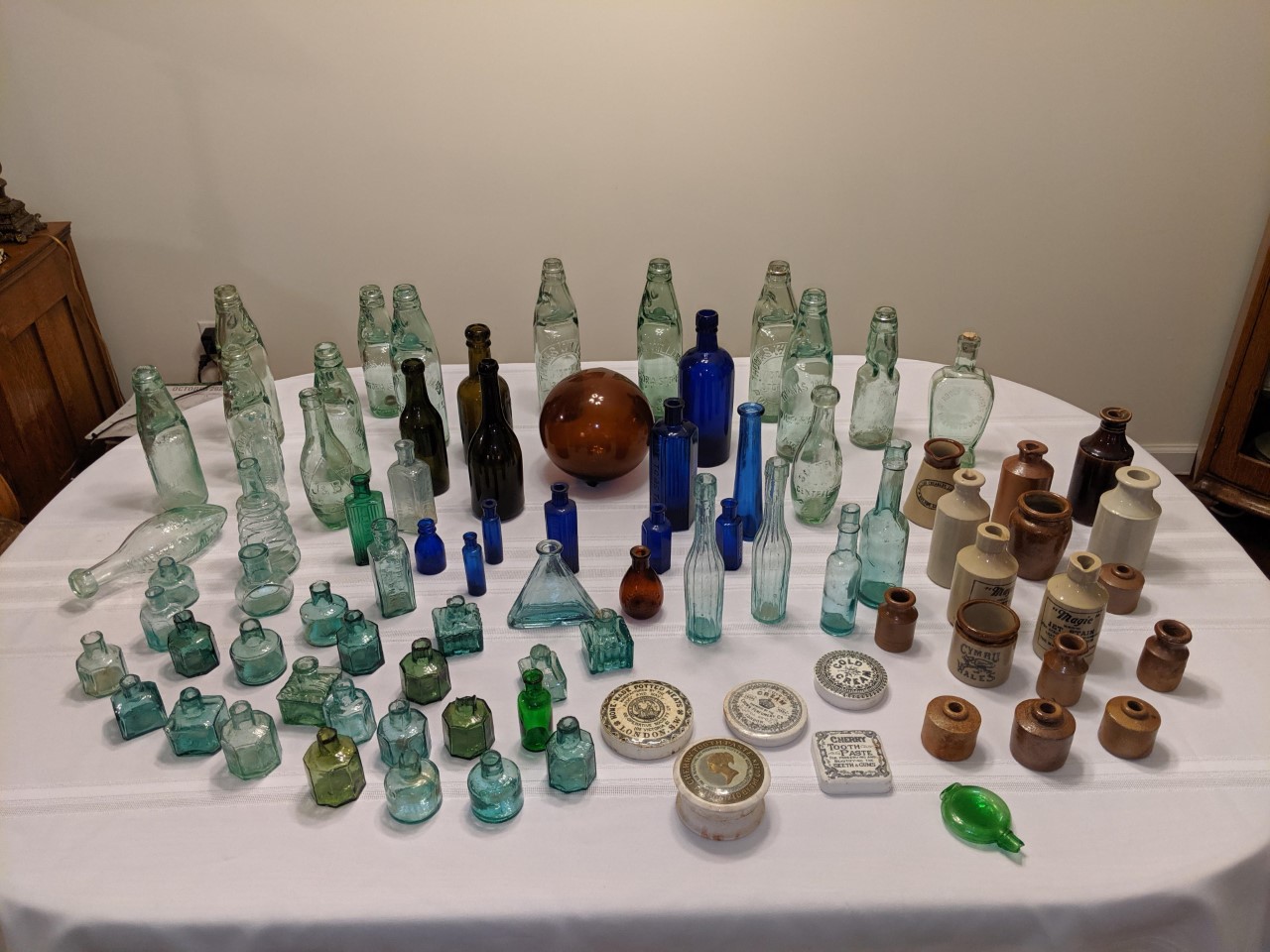
Some of the items that Lawrence found in the dump on Mynydd Nefyn.
(Click photo to enlarge)
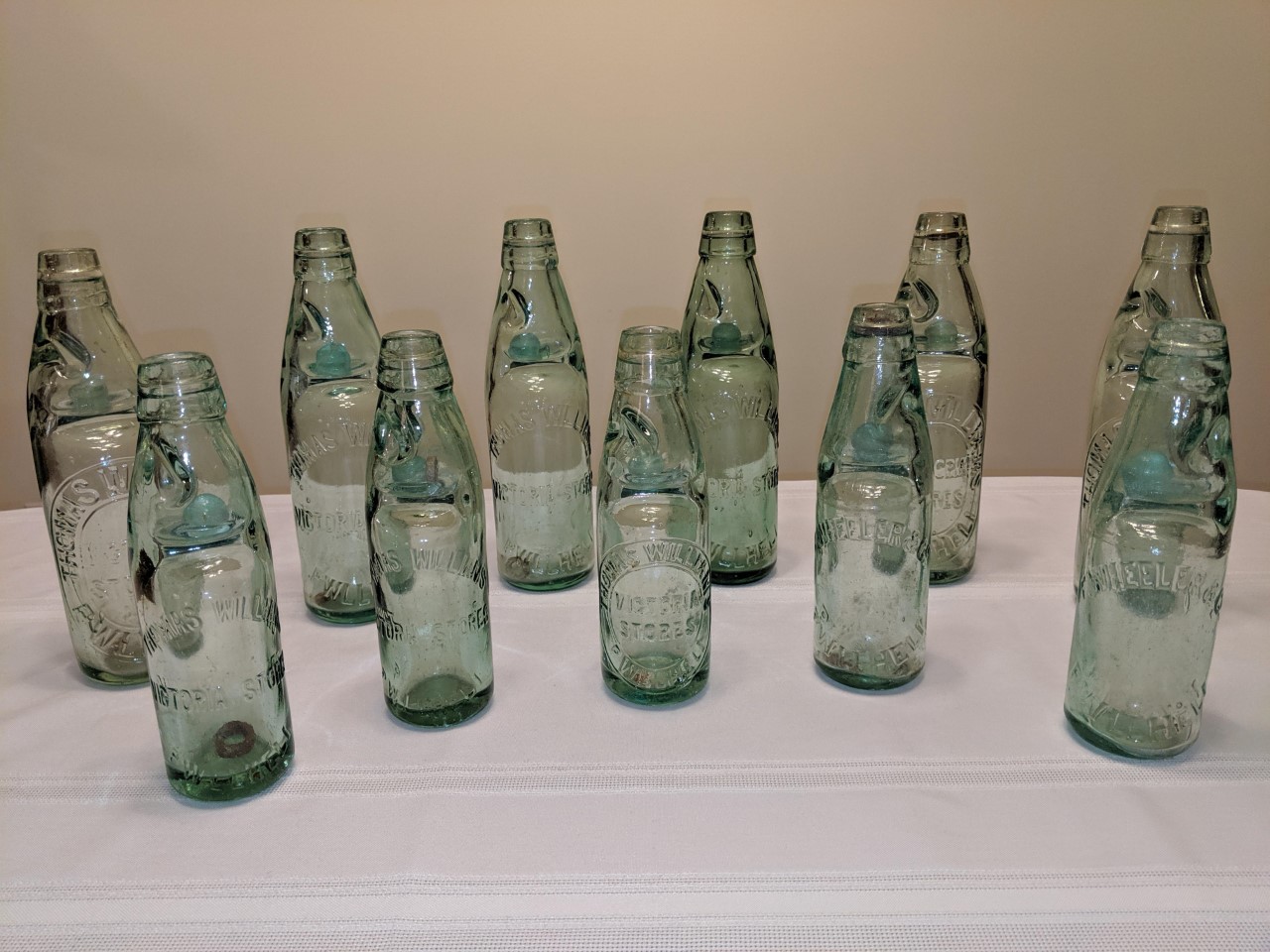
Codd bottles embossed on the outside with the words Thomas Williams, Victoria Stores, Pwllheli.
(Click photo to enlarge)
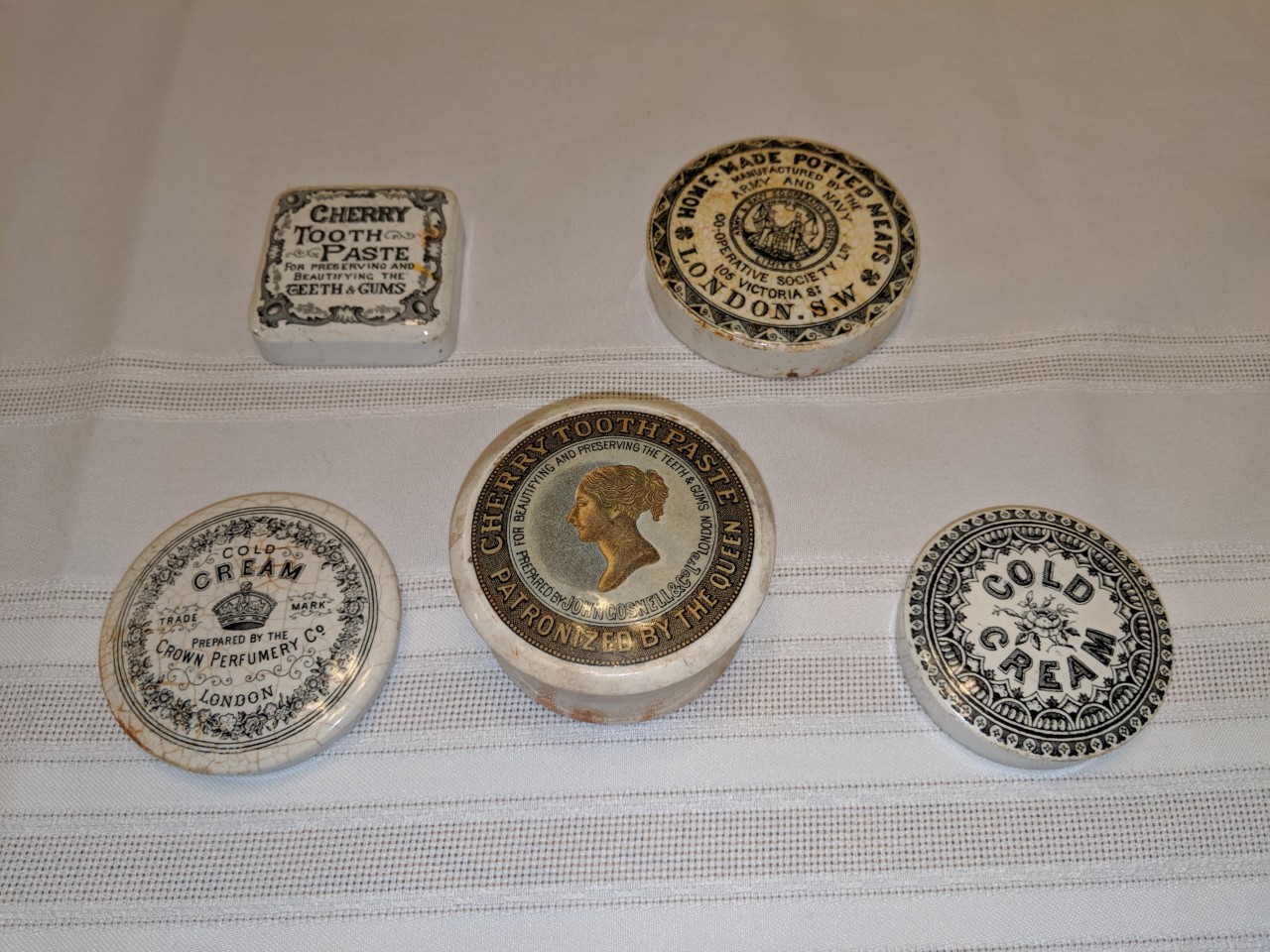
Five ceramic pot lids consisting of two facial cold creams, one potted meat and two tooth pastes. The colored cherry tooth paste is a complete pot and lid with the lid showing a young Queen Victoria.
(Click photo to enlarge)
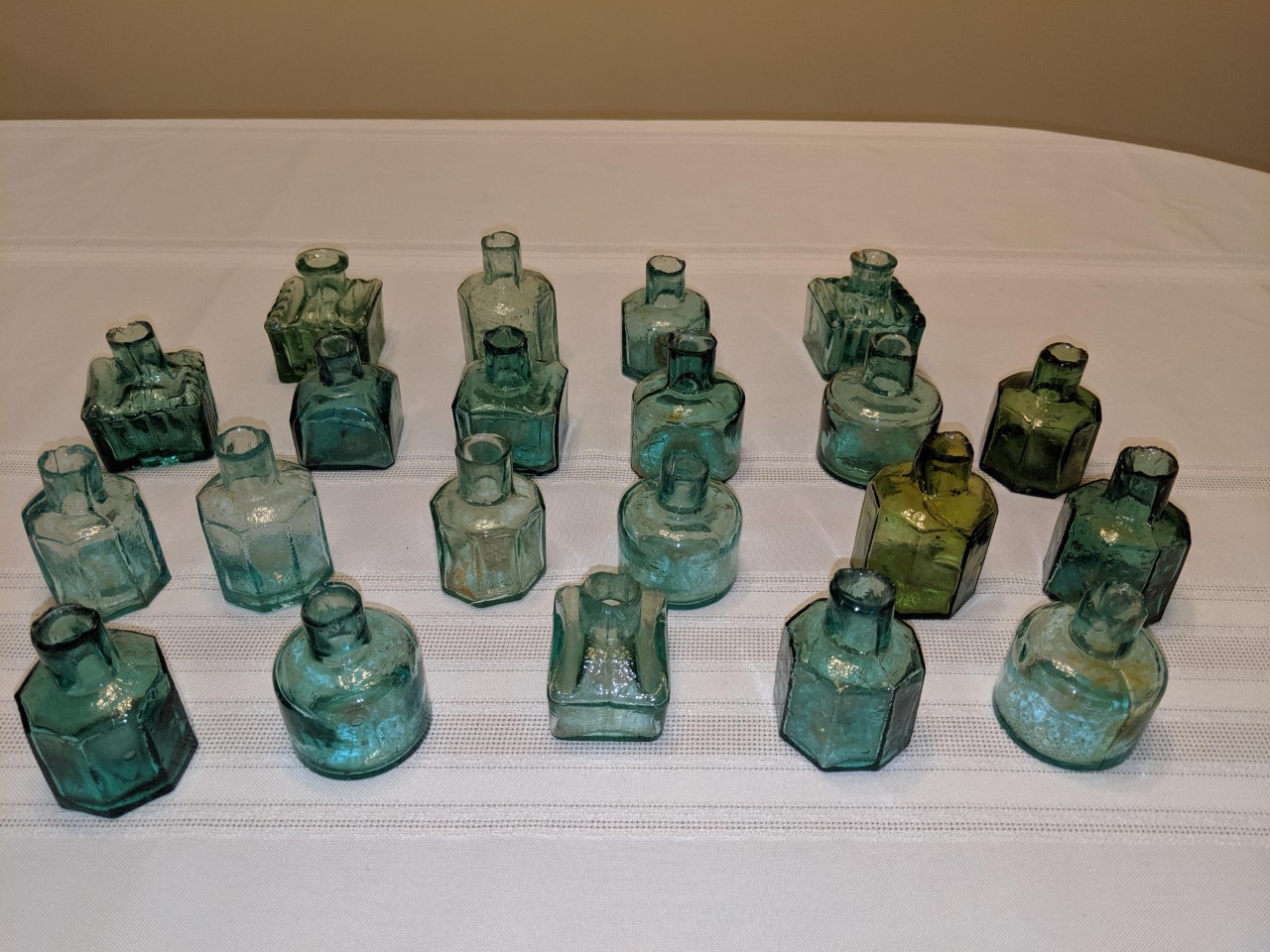
Blown shear top glass ink bottles in a variety of shapes and colors.
(Click photo to enlarge)
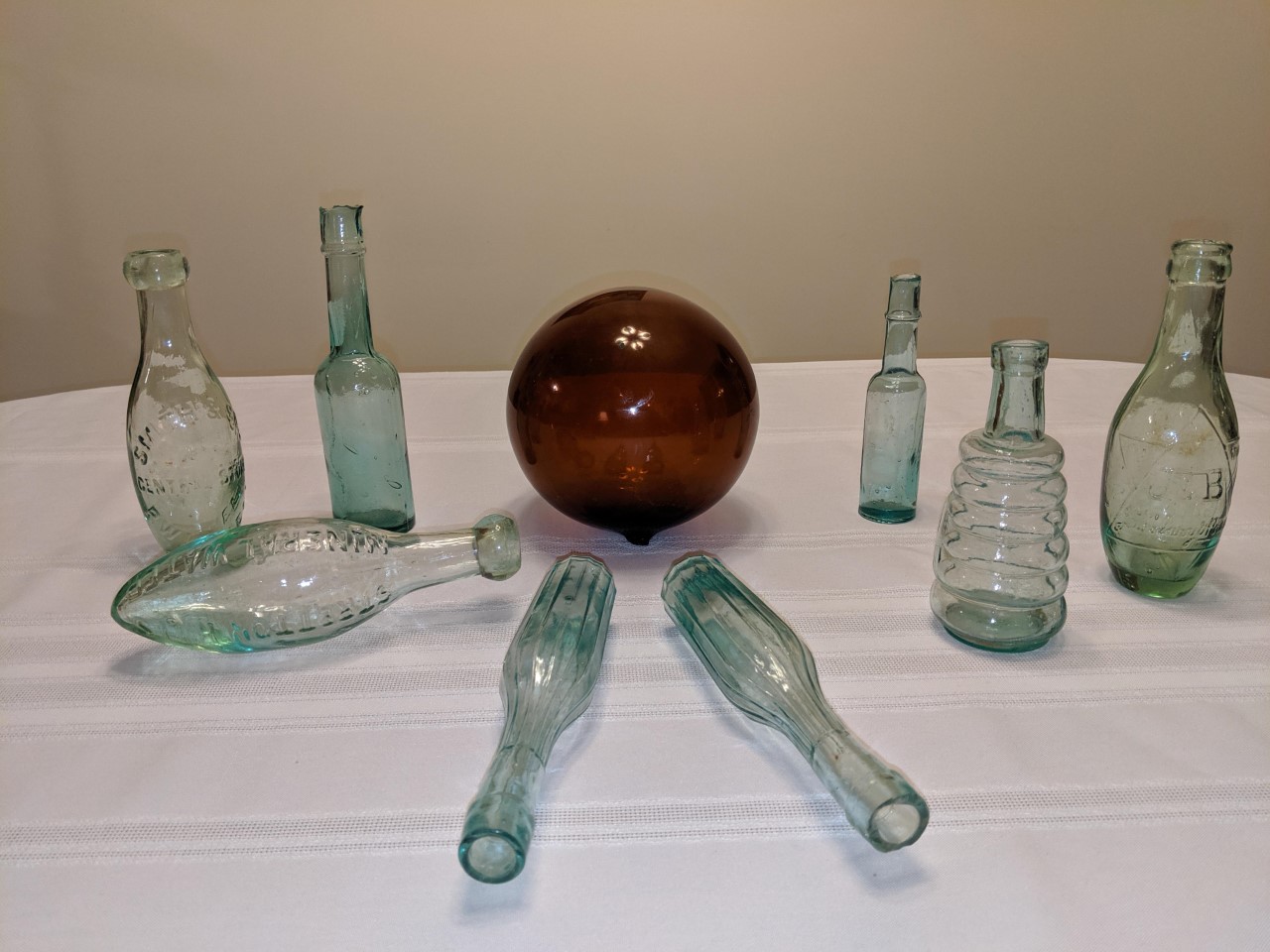
Cobalt blue glass poison bottles.
(Click photo to enlarge)
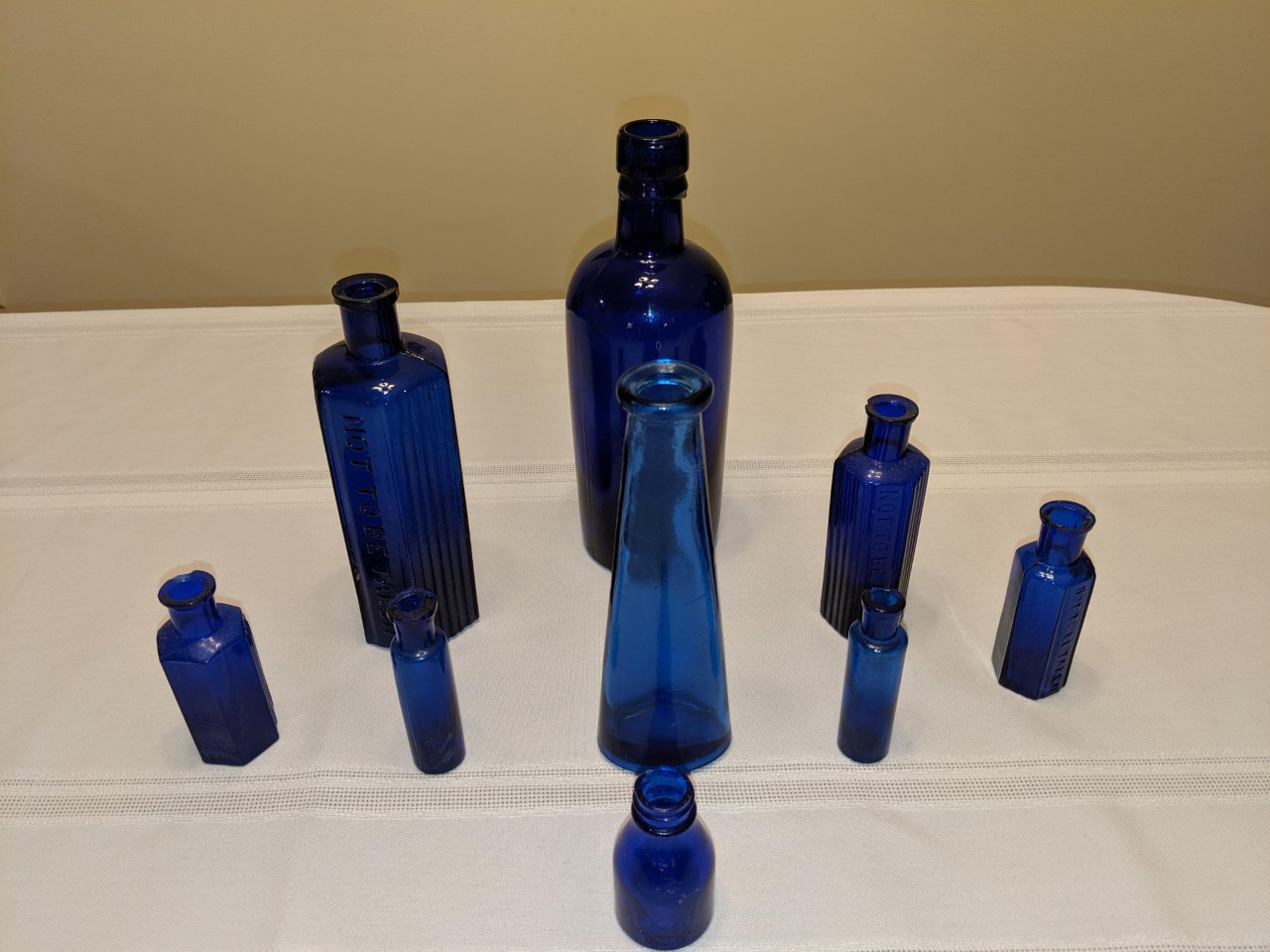
A variety of glass bottles with a torpedo bottle and an amber colored herring net glass float.
(Click photo to enlarge)
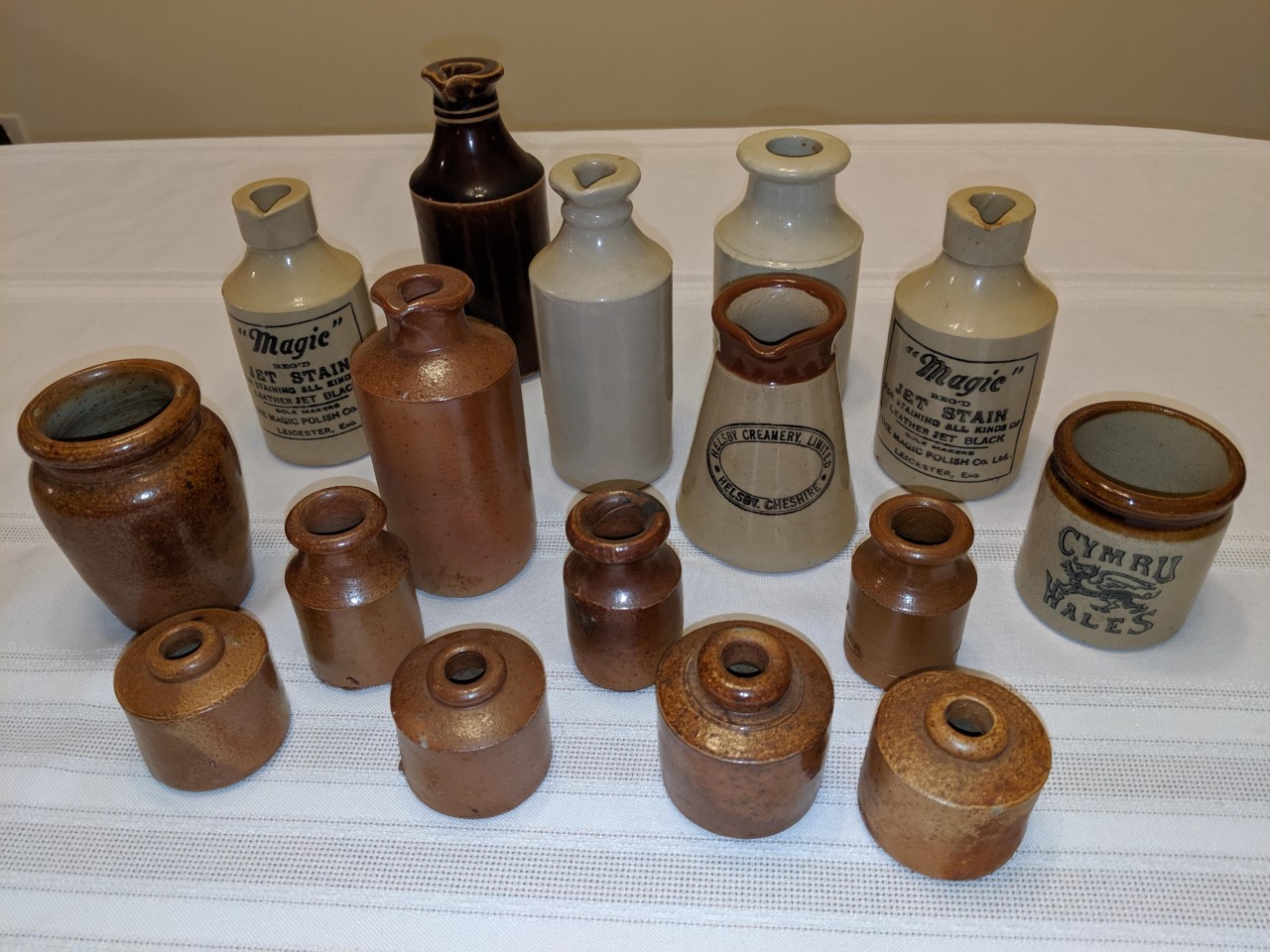
A variety of stoneware ink holders, pots and a creamer.
(Click photo to enlarge)
Dr. Brian Owen
Emmaus, PA, USA
Top of Page